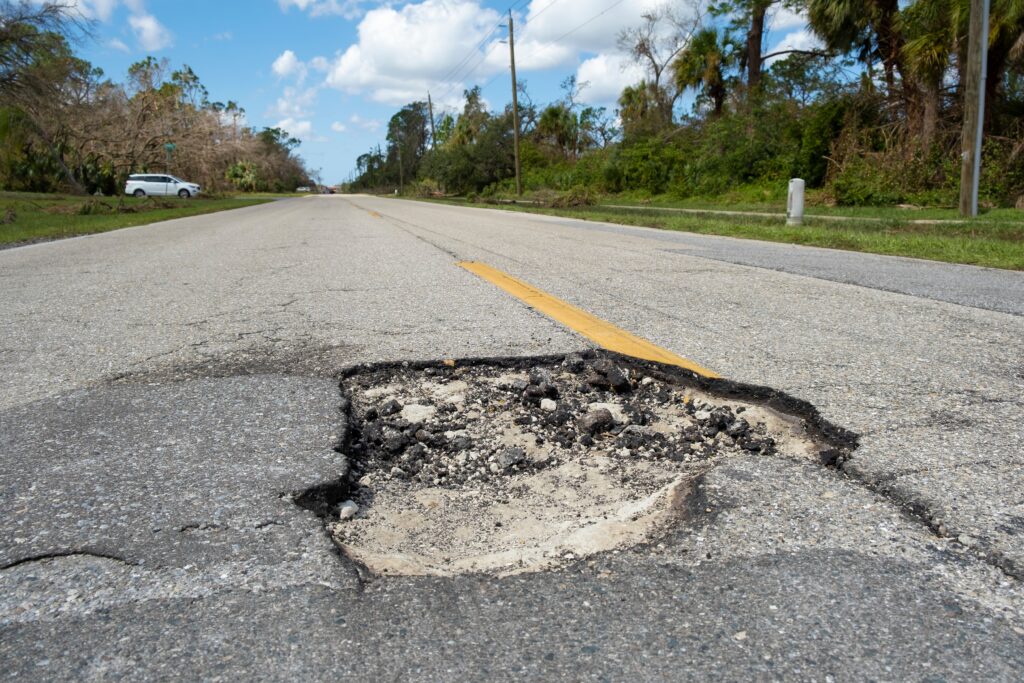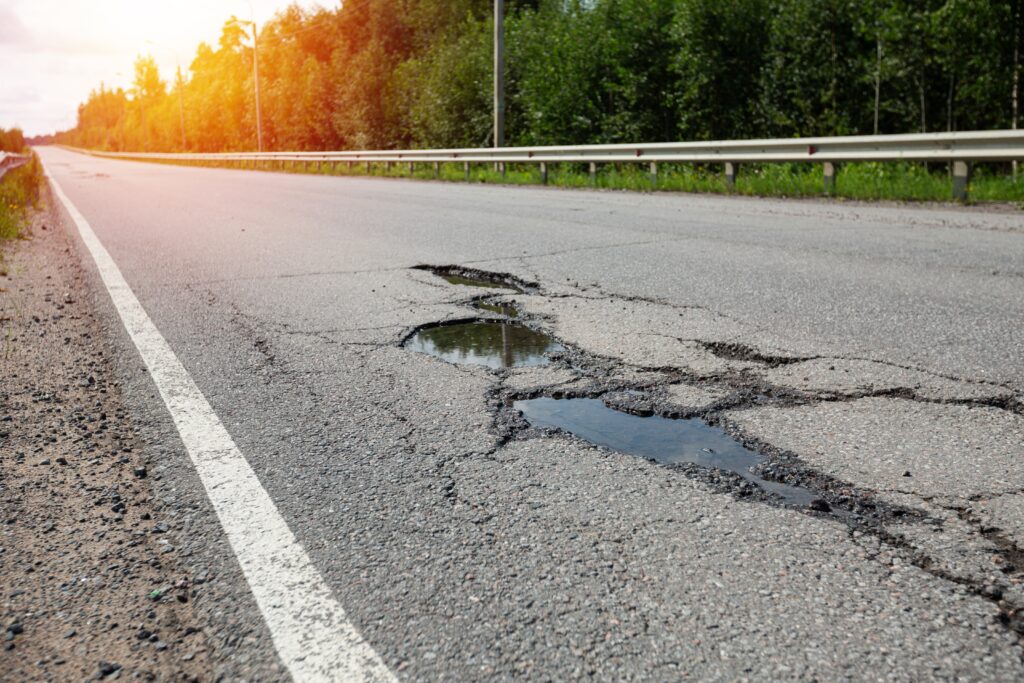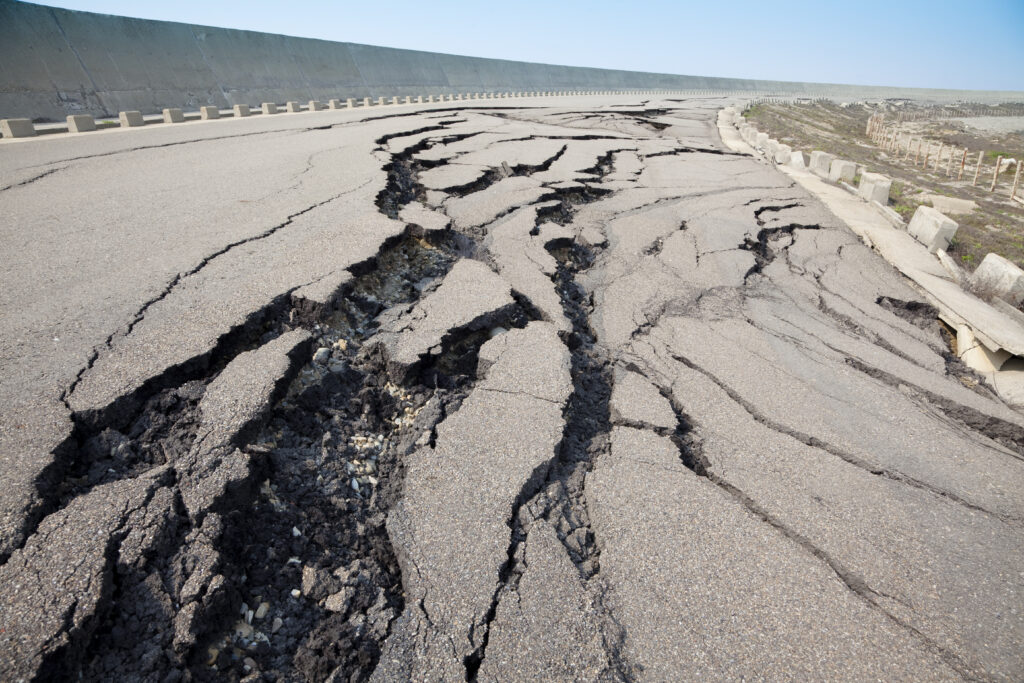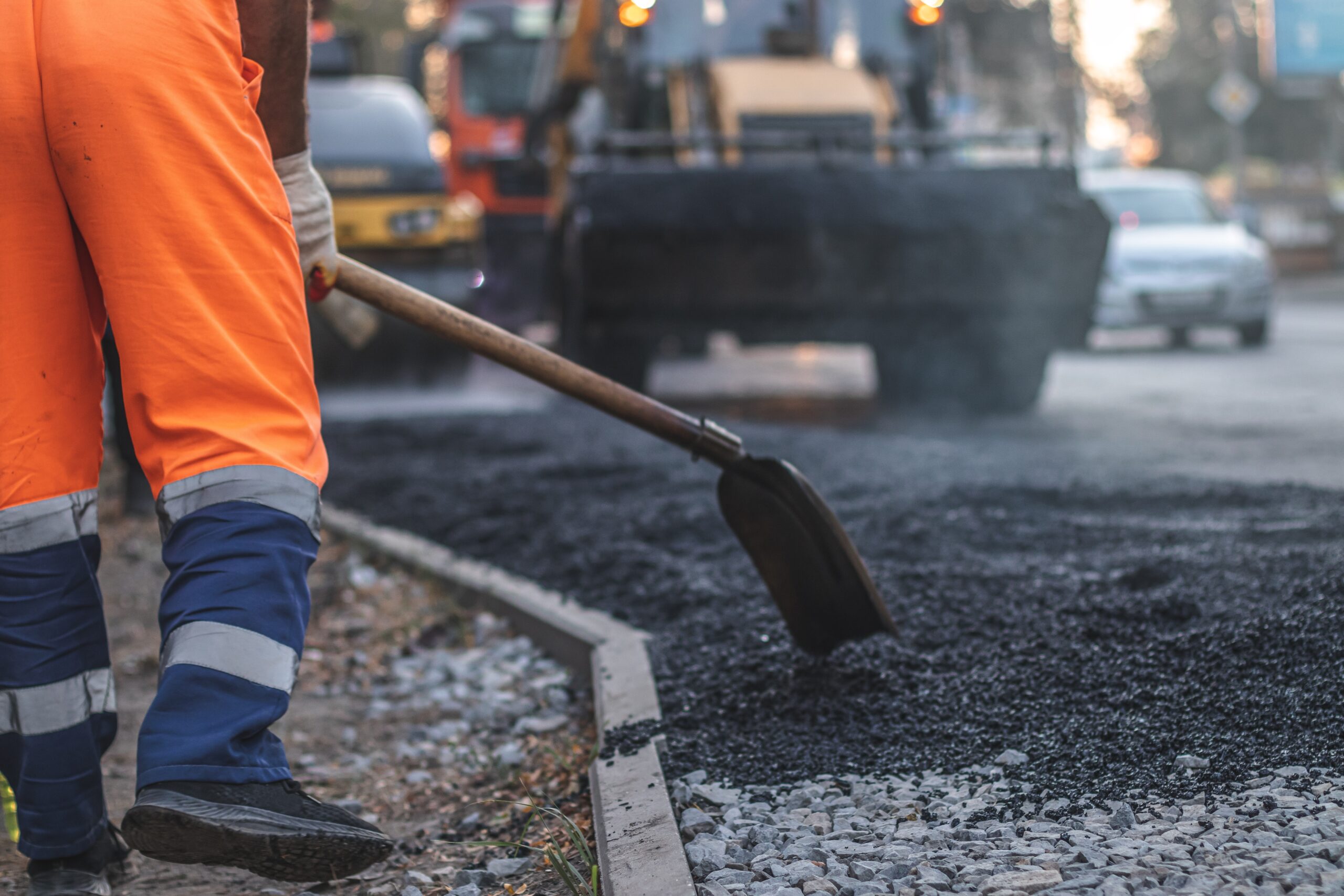
Asphalt maintenance encompasses a range of proactive measures designed to preserve the integrity and extend the lifespan of asphalt surfaces, including driveways, parking lots, and roadways.
According to the Federal Highway Administration (FHWA), implementing pavement preservation strategies, such as crack sealing and sealcoating, can extend the lifespan of asphalt pavements by several years while reducing overall maintenance costs.
In Colorado Springs, the combination of freeze-thaw cycles, high UV exposure, and varying traffic loads accelerates asphalt deterioration. Regular maintenance is crucial in mitigating these effects and ensuring the longevity of asphalt surfaces.
Colorado Springs Asphalt: Challenges and Considerations
Colorado Springs’ unique climate and environmental conditions pose specific challenges to asphalt surfaces:
- Freeze-Thaw Cycles:The region experiences significant temperature fluctuations, leading to the expansion and contraction of water within asphalt cracks. This process, known as freeze-thaw cycling, exacerbates surface cracking and the formation of potholes.
- High UV Exposure:At higher elevations, the increased intensity of ultraviolet (UV) radiation accelerates the oxidation of asphalt binders, leading to surface brittleness and cracking.
- Traffic Loads:The varying traffic loads, from residential vehicles to heavy commercial trucks, contribute to the wear and tear of asphalt surfaces, necessitating regular inspections and maintenance.
- Soil Movement: The expansive soils in the area can lead to differential settlement, causing surface irregularities and potential structural issues in the asphalt.
- Moisture Intrusion: Inadequate drainage systems allow water to seep beneath the asphalt, weakening the base and accelerating deterioration.
Preventive Maintenance: Protecting Your Asphalt Investment
Preventive maintenance is a proactive approach that offers several benefits:
- Cost Savings: Addressing minor issues through sealcoating and crack sealing is more cost-effective than major repairs or full replacements.
- Extended Pavement Life: Regular maintenance can significantly extend the lifespan of asphalt surfaces by preventing minor issues from escalating into major problems.
- Enhanced Safety: Well-maintained surfaces reduce the risk of accidents caused by potholes and surface irregularities.
- Improved Aesthetics: Regular maintenance enhances the appearance of asphalt surfaces, contributing to the overall curb appeal of properties.
- Environmental Benefits: Proper maintenance reduces the need for new materials, conserves resources, and minimises environmental impact.
The California Department of Transportation conducted a study evaluating the effectiveness of preventive maintenance treatments at extending pavement life, demonstrating the cost-effectiveness of such strategies.
Key Maintenance Techniques for Asphalt Preservation
Several maintenance techniques are crucial for preserving asphalt integrity:
- Crack Sealing: Sealing cracks prevents water infiltration, which can weaken the base and lead to further deterioration.
- Sealcoating: Applying a protective layer shields the asphalt from UV rays, oils, and water, reducing oxidation and surface wear.
- Pothole Repair: Timely repair of potholes prevents them from expanding and causing more significant damage.
- Surface Patching: Filling surface depressions and ruts restores smoothness and prevents water accumulation.
- Drainage Improvement: Ensuring proper drainage prevents water from pooling on the surface, reducing the risk of damage.
A comprehensive evaluation by the University of Pittsburgh’s Department of Civil and Environmental Engineering examines the effectiveness of sealcoating (chip seals) as a preventive maintenance strategy for asphalt pavements, particularly on low-volume roadways, highlighting its role in extending pavement life and reducing long-term maintenance costs.
Seasonal Factors Impacting Asphalt Maintenance in Colorado Springs
Seasonal variations significantly impact asphalt surfaces:
- Spring: The thawing of frozen ground can lead to the formation of cracks and potholes. Early inspection and repair are essential.
- Summer: High temperatures can cause asphalt to soften, making it more susceptible to damage from heavy traffic. Sealcoating during this period can provide added protection.
- Fall: Cooler temperatures are ideal for crack sealing and surface patching, preparing the asphalt for winter conditions.
- Winter: Freeze-thaw cycles can exacerbate existing cracks. Regular inspections and timely repairs are crucial to prevent further damage.

Environmental Impact and Sustainable Asphalt Practices
Proper asphalt maintenance contributes to environmental sustainability:
- Recycling: Using recycled asphalt materials reduces the demand for new resources and minimizes waste.
- Reduced Emissions: Well-maintained surfaces reduce vehicle emissions by providing smoother driving conditions, which in turn reduces fuel consumption.
- Water Management: Effective drainage systems prevent water accumulation, reducing the risk of flooding and erosion.
- Energy Conservation: Maintaining asphalt surfaces reduces the need for frequent replacements, conserving energy used in manufacturing and transportation.
Asphalt Maintenance: Compliance and Regulatory Guidelines
Following local and federal regulations ensures safety, compliance, and long-lasting asphalt performance. Key guidelines include:
- Colorado Department of Transportation:CDOT’s Pavement Management Program provides standards for inspection, maintenance scheduling, and material specifications to extend the life of asphalt pavements. It emphasizes preventive maintenance, including crack sealing, patching, and surface treatments to reduce deterioration.
- Federal Highway Administration:The FHWA publishes research and manuals on pavement preservation, highlighting cost-effective strategies such as seal coating, resurfacing, and proper drainage management to prevent premature asphalt failure.
- Environmental Protection Agency:EPA regulations govern stormwater runoff, emissions, and the use of sustainable materials in asphalt maintenance. Compliance ensures environmentally responsible practices and reduces the impact of paving activities on local ecosystems
The City of Colorado Springs’ Engineering Standards and References, including the Pavement Design Criteria Manual and the Pikes Peak Region Asphalt Paving Specifications, establish the engineering requirements, standards, policies, and regulations for public works, encompassing asphalt maintenance and repair.
Cost-Benefit Analysis of Asphalt Maintenance Strategies
Investing in regular maintenance offers significant cost savings:
- Lower Initial Costs: Maintenance procedures are less expensive than complete asphalt replacement.
- Reduced Long-Term Expenses: Preventing major issues through maintenance reduces the need for costly repairs or replacements.
- Increased Property Value: Well-maintained asphalt surfaces enhance the overall value and appeal of properties.
- Budget Predictability: Regular maintenance enables more effective financial planning and resource allocation, leading to more predictable budgets.
A comprehensive cost-benefit analysis indicates that pavement preservation techniques, such as sealcoating and crack sealing, can extend the lifespan of asphalt and reduce long-term repair costs compared to full replacement.
Finding the Best Contractor for Asphalt Preservation
Selecting a qualified contractor is crucial for effective maintenance:
- Experience and Expertise: Select contractors with a proven track record in asphalt maintenance and a thorough understanding of local conditions.
- Licensing and Insurance: Ensure the contractor is properly licensed and insured to perform the required services.
- References and Reviews: Verify the contractor’s references and online reviews to evaluate their reputation and quality of work.
- Written Estimates: Obtain detailed written estimates outlining the scope of work and costs involved.
According to the Federal Highway Administration, selecting a qualified asphalt contractor requires evaluating experience, proper licensing, and client references to ensure quality and compliance with safety standards.
Ensuring Durability: Wrap-Up on Asphalt Care
Regular asphalt maintenance is essential for preserving the integrity and extending the lifespan of asphalt surfaces in Colorado Springs. By understanding the unique challenges posed by the local climate and adhering to best practices, property owners can ensure the longevity and safety of their asphalt investments.
For professional asphalt maintenance services in Colorado Springs, contact Asphalt Coatings Company. Our team of experts is dedicated to providing high-quality services tailored to your specific needs.

Frequently Asked Questions
How often should asphalt surfaces be sealcoated?
Sealcoating should be applied every 2–3 years, depending on traffic volume and environmental conditions.
What is the best time of year for asphalt maintenance?
Late spring to early fall offers optimal conditions for most asphalt maintenance activities.
Can minor cracks be repaired without professional help?
While minor cracks can be filled by homeowners, a professional assessment ensures long-term effectiveness.
How can I prevent water from pooling on my asphalt surface?
Proper grading and installation of drainage systems prevent water accumulation and potential damage.
Are recycled materials used in asphalt maintenance?
Yes, many asphalt maintenance practices incorporate recycled materials, promoting sustainability.



